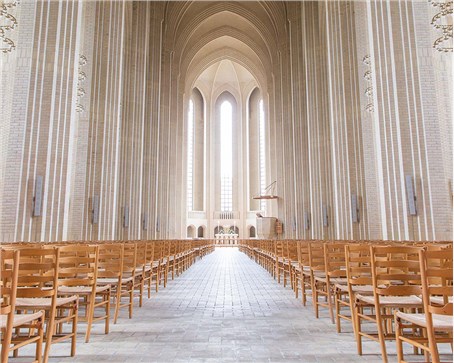哥本哈根格伦特维教堂设计/Grundtvig's Church
格伦特维教堂又名管风琴教堂,位于丹麦首都哥本哈根,是为了纪念丹麦神学家、作家和诗人格伦特维而建造,是为数不多的表现主义风格的教堂。因造型象管风琴而被称为管风琴教堂。管风琴教堂由丹麦著名设计师P.V 詹森.克林特(P.V. Jensen-Klint)设计于1912年到1913年期间。教堂的设计是多种风格的融合。设计师在开始设计之前,研究了很多丹麦中世纪乡村教堂,将表现主义的现代几何元素和哥特式风格、欧洲座堂的风格结合在一起。
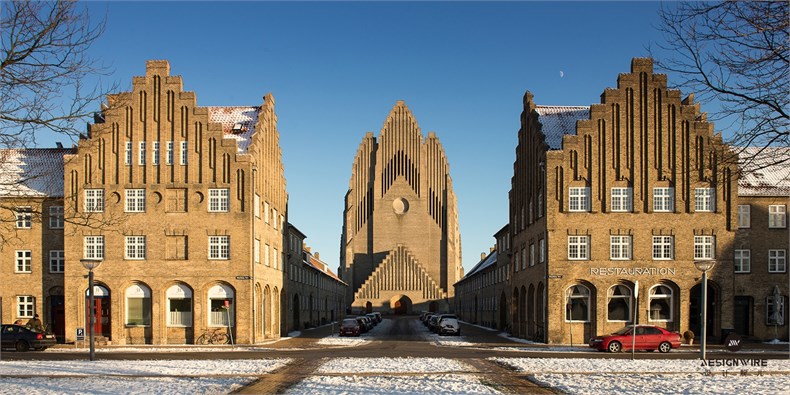
Six million yellow bricks on a hilltop just outside Copenhagen form one of the world’s foremost, if not perhaps comparatively unknown, Expressionist monuments. Grundtvigs Kirke (“Grundtvig’s Church”), designed by architect Peder Vilhelm Jensen Klint, was built between 1921 and 1940 as a memorial to N.F.S. Grundtvig – a famed Danish pastor, philosopher, historian, hymnist, and politician of the 19th century. Jensen Klint, inspired by Grundtvig’s humanist interpretation of Christianity, merged the scale and stylings of a Gothic cathedral with the aesthetics of a Danish country church to create a landmark worthy of its namesake.
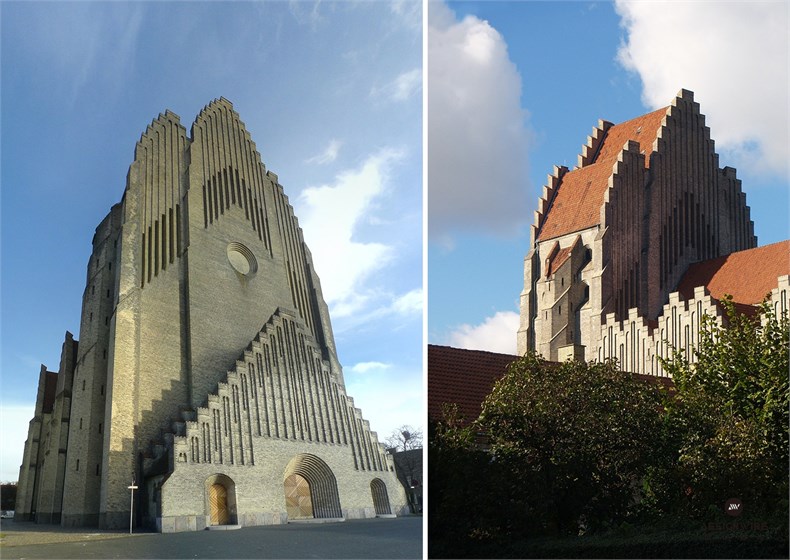
教堂最有特点的莫过于西侧面,外形象一座巨大的管风琴。钟楼高达49米,中间是丹麦教堂常见的台阶状的山墙,但是顶点又有变化。整座教堂全部用手制黄砖制成,共耗费600万块黄砖。整座教堂可以容纳1400人。除了外形象管风琴外,教堂内部有一座壮观的管风琴。教堂现全年开放,不必仅限于宗教仪式期间,其管风琴也常用于音乐会。
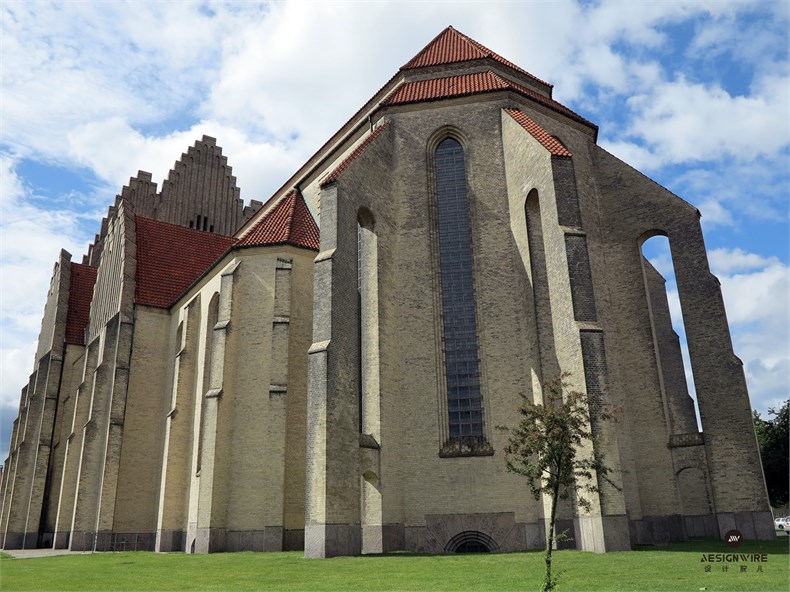
It was decided in 1912 that Grundtvig, who had passed away in 1873, had been so significant to Danish history and culture that he merited a national monument. Two competitions were held in 1912 and 1913, bringing in numerous design submissions for statues, decorative columns, and architectural memorials.
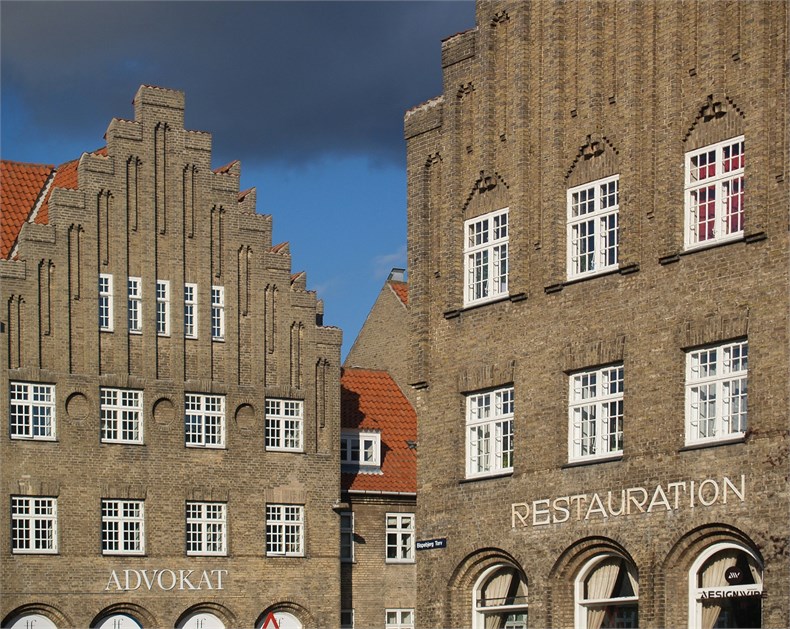
为了纪念丹麦著名的神学家、诗人、哲学家、教育家Grundtvig,政府在全国征集设计方案。在众多的方案中,詹森.克林特(P.V. Jensen-Klint)的设计方案引人注目,但是并没有马上被评委会采纳。因为他的设计方案不是建造一个纪念碑,也不是建造一个雕塑,而是要建一座大教堂。而建造教堂的造价太大,远远超出了政府的预算。可是,教堂设计方案十分独特,经过长时间的酝酿讨论,最后评委会还是采纳了他的方案。教堂在1921年9月8日Grundtvig生日那天奠基,于1940年全部完工。遗憾的是詹森.克林特没有亲眼见到全部工程完成就于1930年去世了。他的儿子考尔(Kaare)和孙子伊斯本(Esben)继承了他的工作,完成了全部工程。

It was purportedly while fuming over only taking second prize in a church design competition in Aarhus that Jensen Klint designed and submitted his own proposal for Grundtvig’s monument. He worked under the belief that, whether or not his entry was chosen, he should still produce a church he felt Grundtvig deserved – a modus operandi which may explain how the construction cost for Jensen Klint’s proposal ballooned to twenty times that of the other submissions. Nonetheless, the judges felt confident that donations from the Danish people, doubled by the government, would be sufficient to sponsor the project and announced Jensen Klint as the winner in 1913.
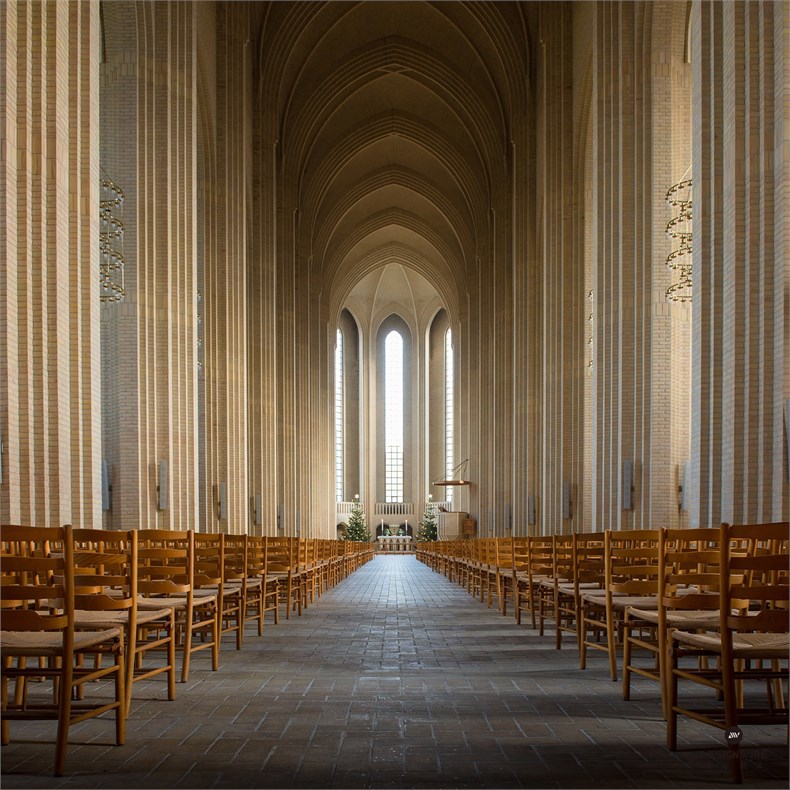
In his design, Jensen Klint referenced a particular brand of nationalist romanticism for which Grundtvig had been known. Grundtvig had played a large part in the proliferation of folkehojskol, or folk high schools, that welcomed young Danes from every social class to come and study their country’s language and history. These schools embodied Grundtvig’s rejection of classical academies, which he criticized for favoring the elite and eschewing Danish in favor of Latin.
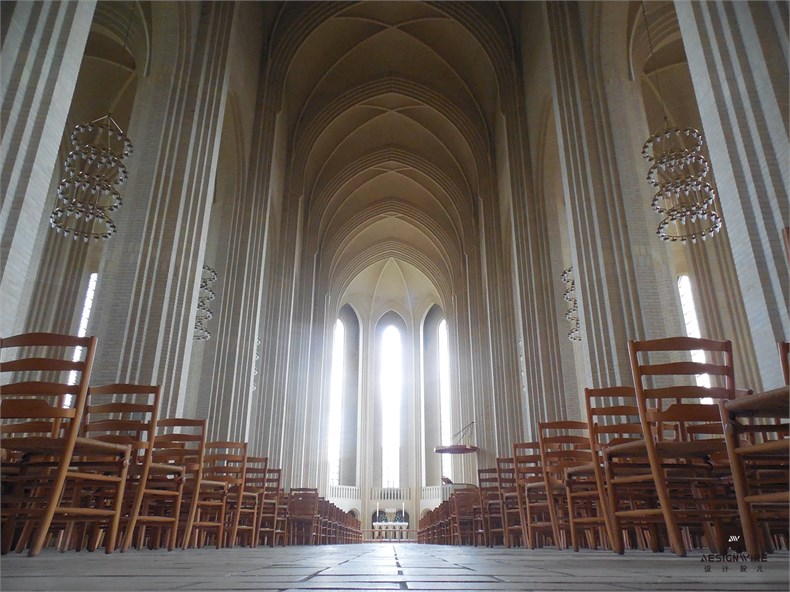
In many ways, Jensen Klint’s creation is surprisingly traditional. Spatially, Grundtvig’s Church is laid out as a typical cruciform cathedral, with columns separating the nave from two flanking aisles. Like Gothic cathedrals, the church uses soaring pointed arches and windows to define the sacred space with light. Jensen Klint was also prone to designing elements in triads: most notable are the three towers, as well as the three entries on each side of the church – a religious metaphor for the Trinity common throughout Christian churches around the world. This latter design gesture creates a total of twelve portals – a reference to the twelve entryways to the New Jerusalem as depicted in the Biblical book of Revelations and a nod to the apostolic disciples.
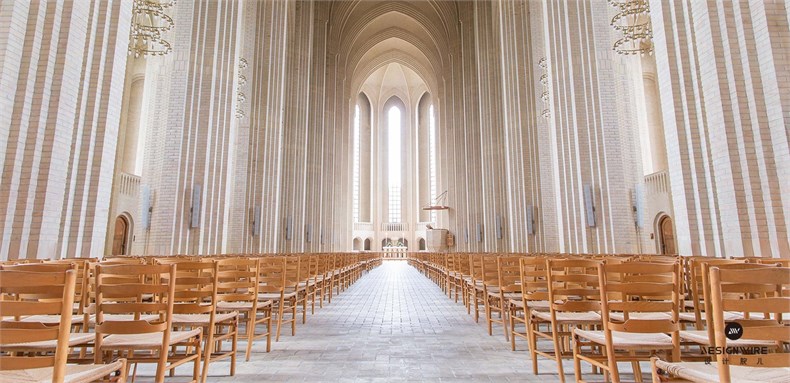
Just as Grundtvig had touted the importance of maintaining Danish cultural tradition, so too did Jensen Klint strive to represent his homeland’s vernacular architecture in his design. The crow-stepped gables of the exterior call back to the façades of traditional Danish country houses and churches, albeit on a far grander scale. Deference to Denmark’s own building canon also influenced the choice of building material: handmade yellow brick. Other than the baptismal font and the roof, the entire church is composed of these bricks. Though crafted and assembled by several different masons, all the bricks came from Zealand (the island on which Copenhagen is situated), as did the roofing tiles. Vast numbers of bricks were required for the job; a single pillar contains roughly 30,000.
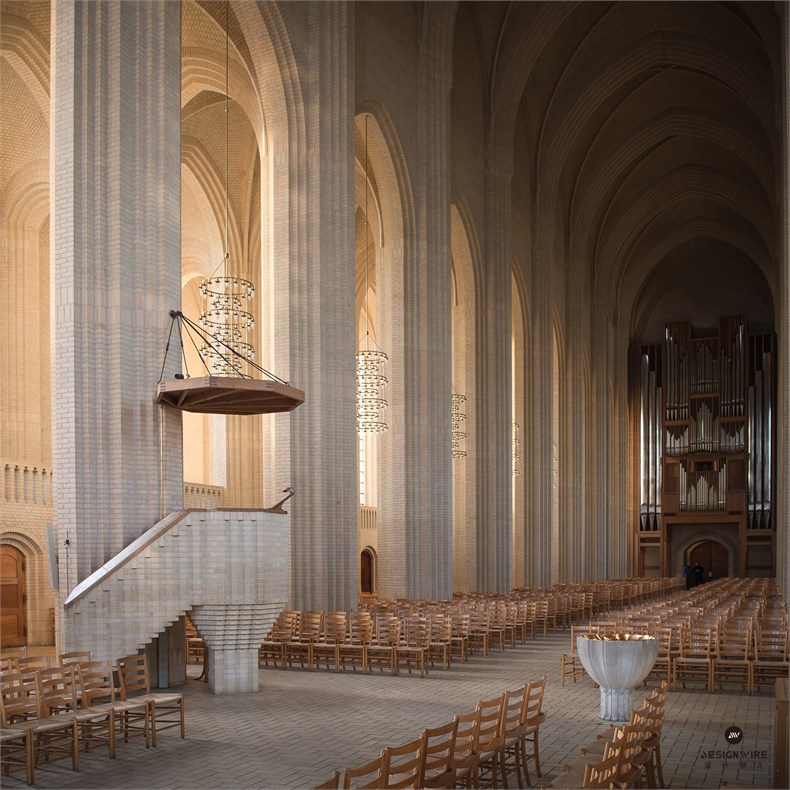
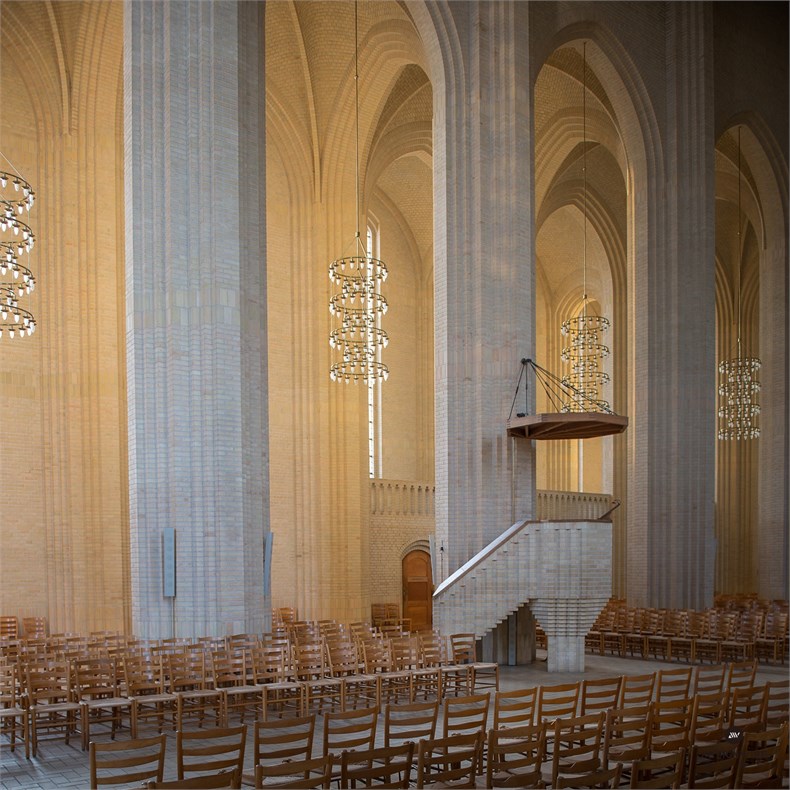
While Jensen Klint synthesized two medieval styles for his design, he did so with striking restraint. The cavernous interiors of the church are almost entirely devoid of ornament; the massive columns rise to pointed arches and ribbed vaults with little to no visual interruption. The dramatic simplicity of the design is highlighted by the church’s gaping windows, which allow the sunlight to stream in and reflect off the polished bricks within. Taking his cue from medieval master builders, Jensen Klint based the proportions of the interior on traditional aesthetic ratios intended to give it a pleasing appearance without the need for additional ornamentation.
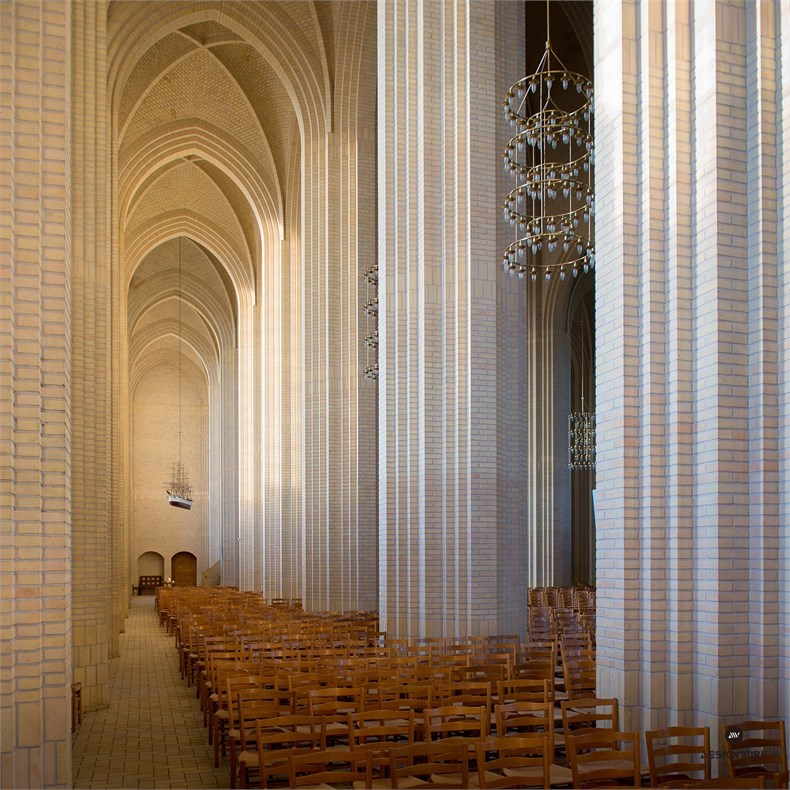
Exactly where to build Grundtvig’s Church was a matter of significant debate between the competition’s end in 1913 and the beginning of construction in 1921. After a number of sites were considered, it was decided that the memorial would form the centerpiece of a new hilltop community at Bispebjerg, a suburb of Copenhagen. Though some complained that the location was too remote and empty, others rebutted that the church would find useful service once the new neighborhood was built around it.
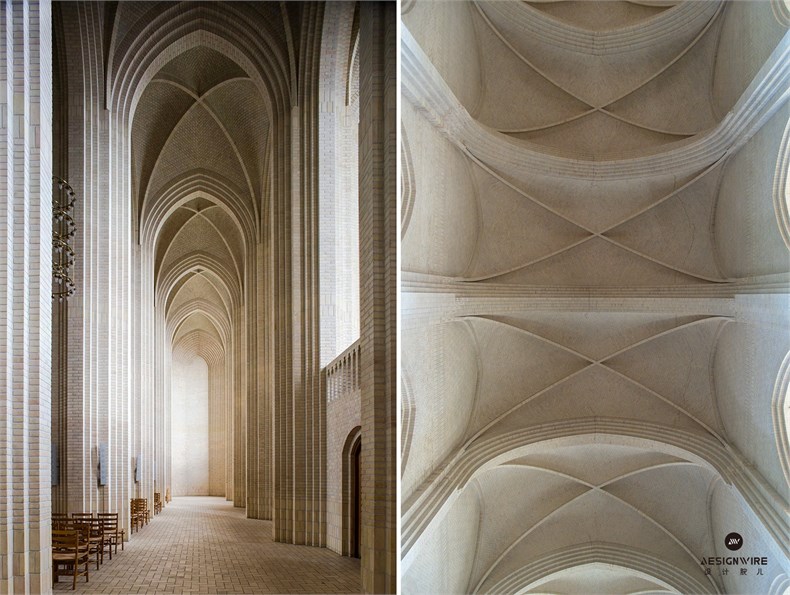
The design of the new housing development ultimately fell to Jensen Klint too, who adapted the Classical layout proposed by Copenhagen’s city planners into a less rigid medieval plan. He also inverted the initial decision to have building heights rise from the boundaries to the church; instead, he flanked the church with low-lying houses, allowing it to loom more dramatically over its surroundings. Stylistically, the development is clearly linked to the church at its core, with similar crow-step gables and yellow brick walls. Ever mindful of keeping the houses affordable, Jensen Klint greatly limited the complexity of their structure and decoration; the most elaborate architectural gestures were the articulated doorways unique to each group of homes.
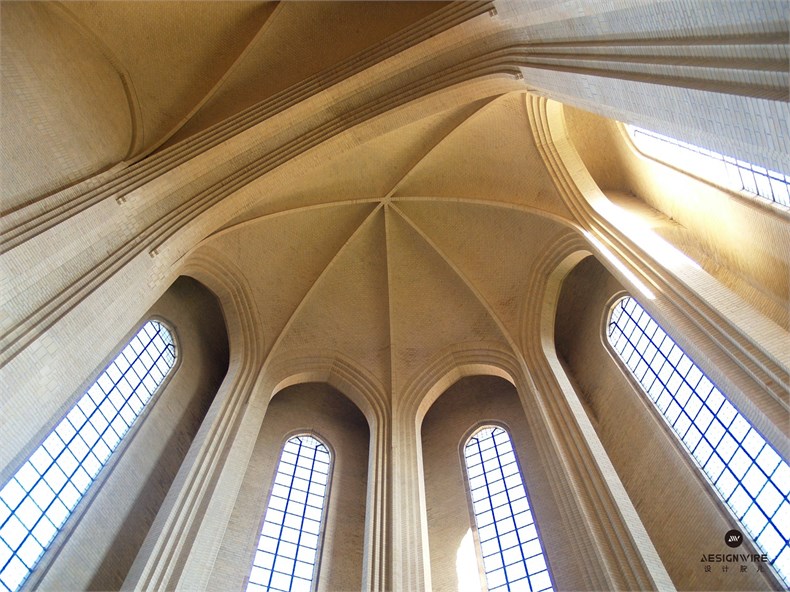
Construction of Grundtvig’s Church lasted 19 years, during which time the building was erected in two phases under supervision by three different architects. Initially, the money raised only covered construction of the western bell tower, which opened in 1927 as a temporary church with seating for a congregation of 200. Once work commenced on the rest of the building, the flooring material changed from brick to tile, a difference that is reflected in the floor of the completed church to this day. When P.V. Jensen Klint died in 1930, supervision of the work was taken on by his son, Kaare Klint. Kaare’s son Esben also worked on the project, meaning the construction of the church was overseen by three generations of the same family.
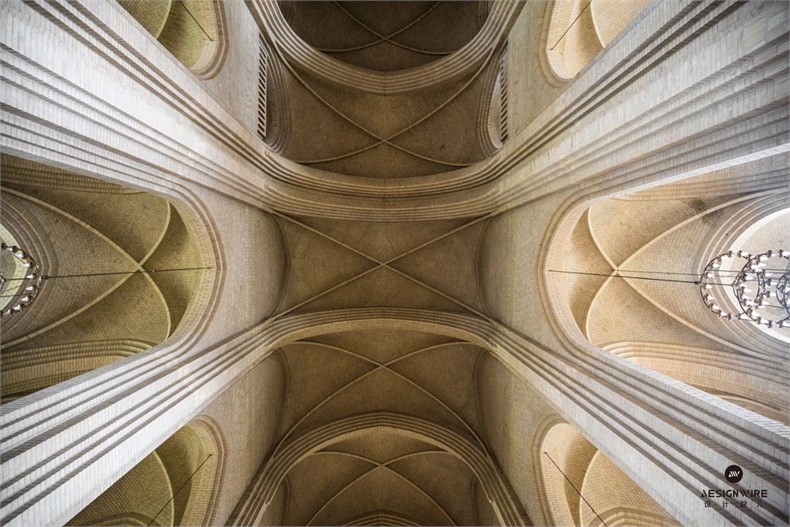
Grundtvig’s Church was consecrated by the King of Denmark on September 8, 1940 – 19 years to the day after construction began, and on N.F.S. Grundtvig’s birthday. The building was fully packed for the ceremony, as it was the day after and for many Sundays following its opening. What was once a field of rye before 1921 is now the site of one of Denmark’s largest and most memorable churches, a monument not only to Grundvig, but to Danish culture, Expressionism, and the architect who combined them all into a stunning orchestration of hand-crafted brick.

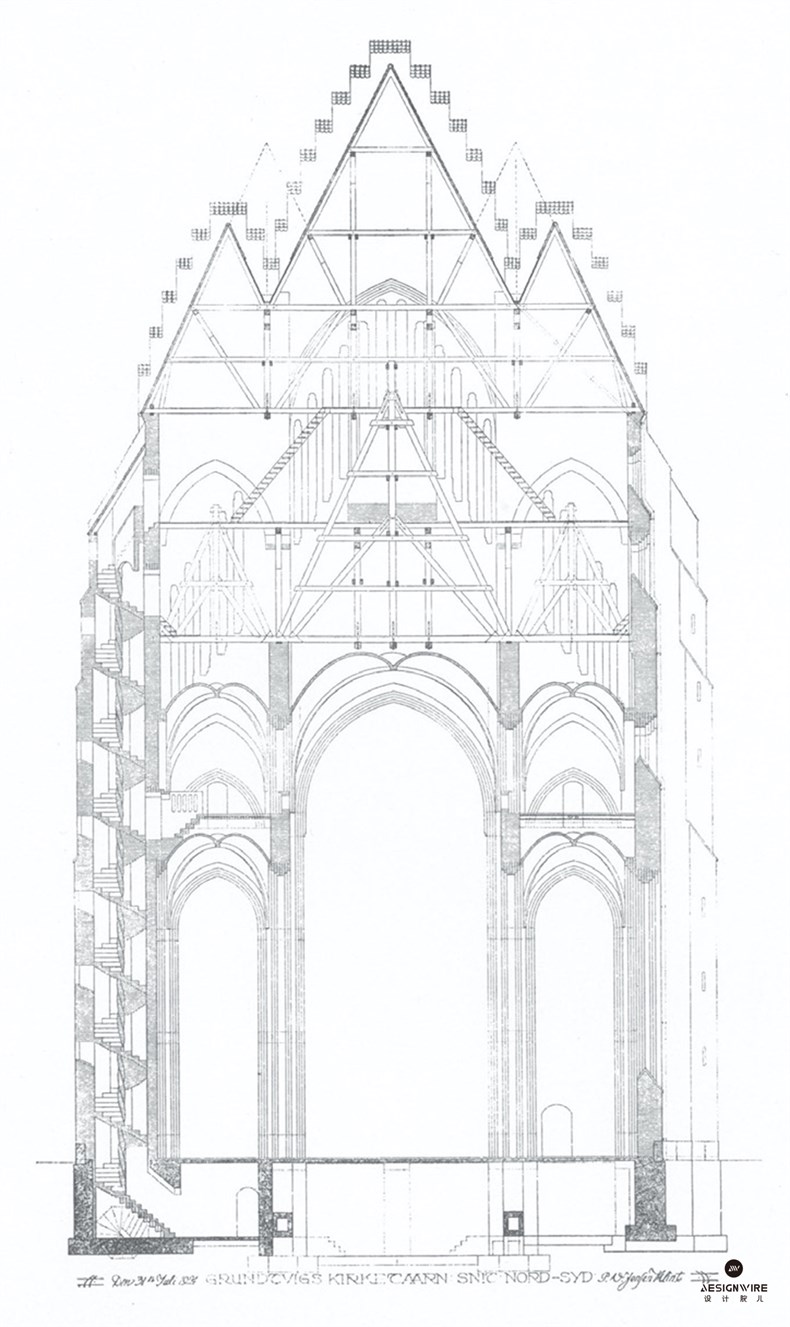
▲立面图 facades
设计师: P.V 詹森.克林特(P.V. Jensen-Klint)
项目地: 哥本哈根, 丹麦
完工时间: 1940
Edit by Designwire
